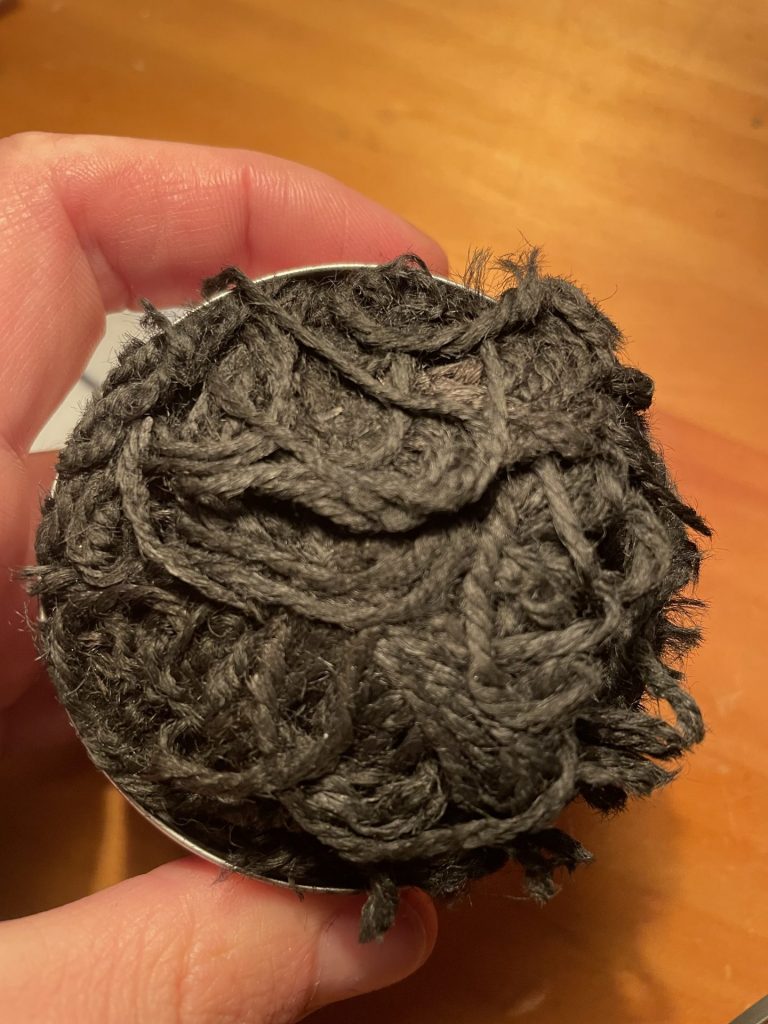
Imagine a tinder that you can create (it doesn’t occur in nature, but you can make as much of it as you desire), lights with nothing more than a spark ( you can light it with the cool sparks of flint – you don’t need ferrocerium), and is completely windproof?
Sounds too good to be true. But it’s not. It’s a real thing, and you can make it very easily at home.
Here’s the really interesting part, though. This material isn’t the product of technological advancement and space-age materials. It’s actually one of the most basic materials you can produce, and has been used for centuries if not millennia.. Carrying a bit of this, along with a piece of steel and flint, was no doubt a hedge against cold and drear for the earliest settlers.
It’s called char cloth, and it is one of the most useful fire starting materials I’ve ever come across. I’m sure once you learn how to make it and light a fire with it, you’ll feel the same way, too.
What Is Char Cloth?
Char cloth is a natural material – or rather, what remains of a natural material – when it has been selectively heated under a very restricted oxygen supply.
Char cloth, as far as I know, can be made only from natural, plant-based fibers like cotton, jute, sisal, or hemp. Synthetic fibers will simply melt and do not oxidize according to the same chemical process as natural fibers.
Basically, you take these materials and you place them in an enclosed container that has a few, very small vents that allow the release of certain gasses, but only allow very little to no oxygen in.
Then you heat the container with the fiber inside of it, either in a fire or in a kiln. In the absence of oxygen, the material inside cannot properly combust. It can only be partially chemically converted into a carboniferous residue that has a very low ignition temperature. The chemical process would be called combustion in the presence of sufficient oxygen; this process, in the absence of oxygen, is called pyrolysis.
It’s partially burned – that is, charred (hence the name) – and all that remains are the carbon and some potential energy. The remaining material has a low ignition temperature and is very easy to light, even in adverse conditions and in the presence of wind.
Here’s how to make it.
How to Make It
To make char cloth, you’ll need a few things. First and most importantly, you’ll need a quantity of natural, fibrous materials that you want to convert into char cloth. Things I have used to create char cloth include scraps of old cotton clothing, lint from the dryer, cotton puffs, and natural cordage.
Case in point: in this tutorial, I’ll be using 100% jute twine, which as it is is a good tinder. Pyrolyzing it to make char cloth simply makes it windproof and easier to light.
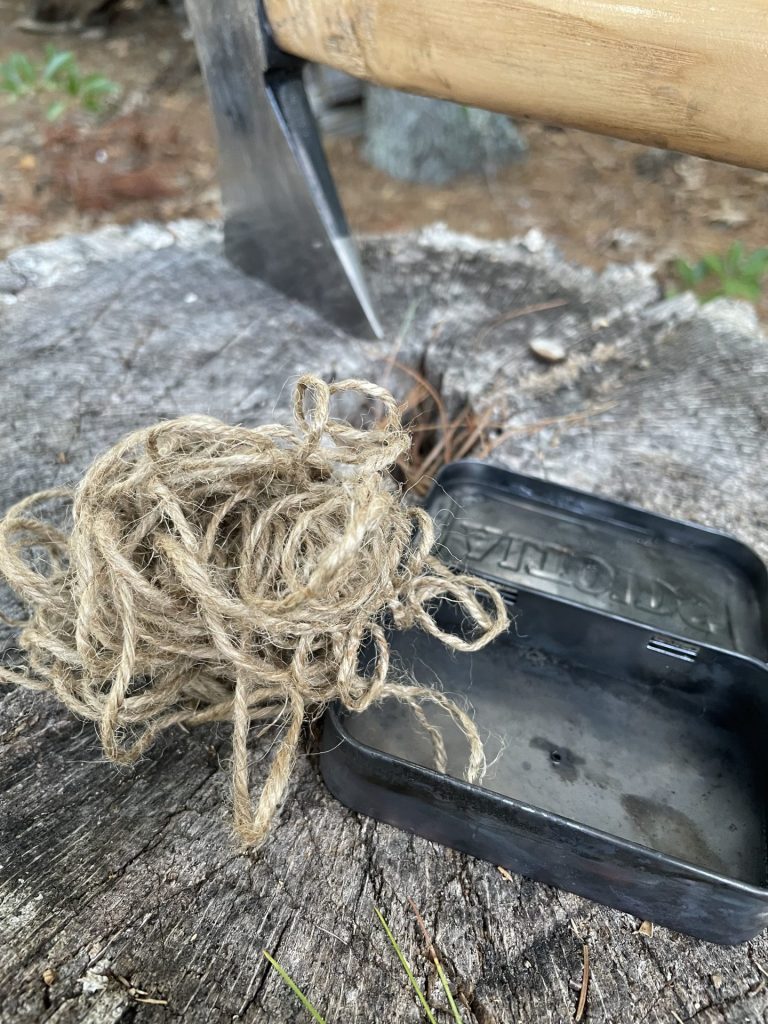
You’ll also need a proper, partially airtight container that is fireproof or resistant to high heat, as well as a heat source. I suggest making this outdoors on a fire because it is easiest and most expedient that way. The process also creates a lot of smoke so you won’t want to be doing this inside.
As for the container I use to create the char cloth, for that I use an old Altoids tin that I’ve modified somewhat. I will admit I did not create this idea and got it somewhere on the internet (I don’t remember where) but it works like a charm.
The tin, which is likely made from aluminum, is all but impervious to the heat of the fire I will use to create the char cloth. To prepare it for use, all you need to do is punch a hole in the top and bottom surfaces. I use a small brad or a finishing nail to punch one hole in the center of the lid and one hole in the base.
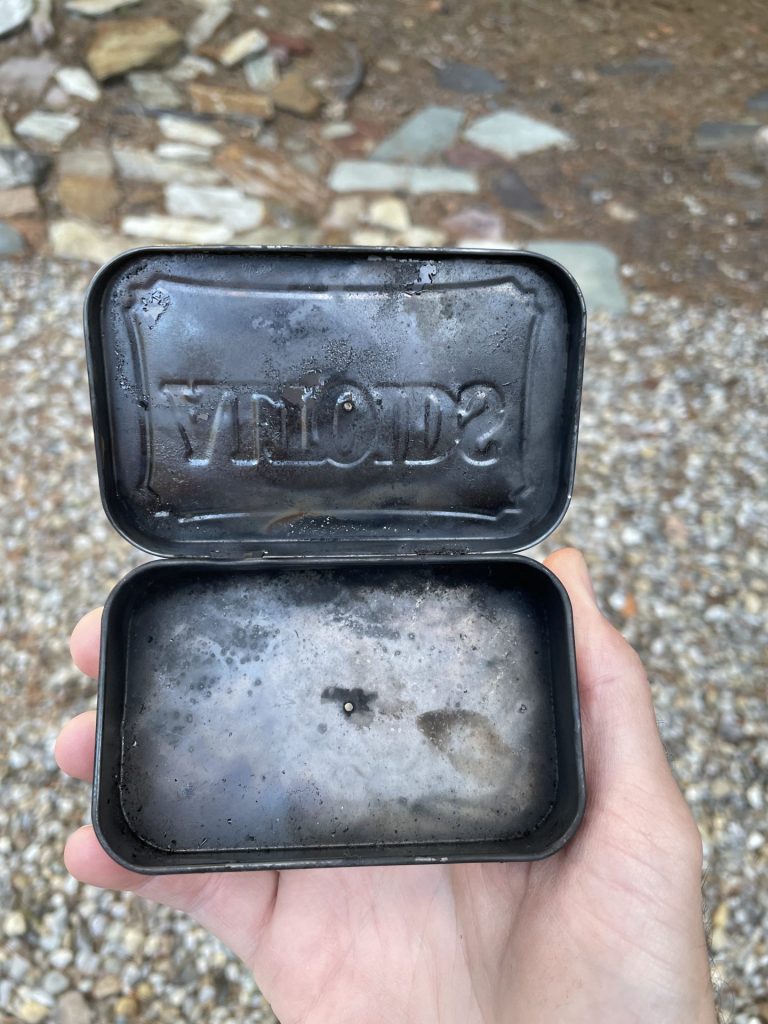
You can also probably use a thumbtack, but whatever you use to punch the hole must be a small diameter or it will let too much oxygen in and your char cloth will burn instead of pyrolyzing (charring). If you let in too much oxygen, when you open it, you’ll have ash and not char cloth.
After you prepare the tin you’re using to make char cloth, it’s time to load it with the material you plan on charring. Here, as stated, I will be using jute twine. You can use any other natural fiber as I stated above; I’ve also made quite a bit of this stuff with cotton puffs. You can use old cotton rags, linen fabric, denim (so long as it is pure cotton) or anything else like that. Again, synthetics will melt. You need natural fibers for this.
Lay the material into your prepared tin as tightly as possible. The reason you want to pack it in is to squeeze out any voids that will contain oxygen. Again, the more oxygen in the container, the more fully the material will combust and the less char cloth you’ll be left with. If you do this right, when you open the container, you’ll have pure black char cloth with no white ash around the edges.
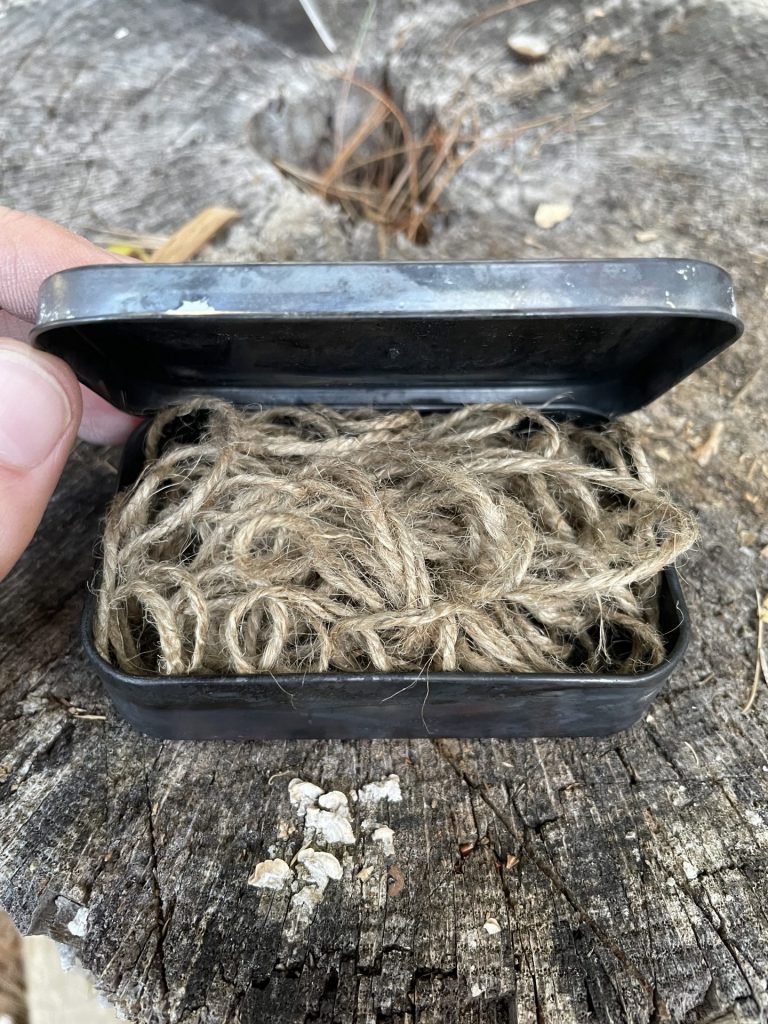
Once you’ve packed the material in, as demonstrated in the picture above, get yourself a small fire going. Build the fire up a bit and burn it down to coals, as shown in the image below. This fire is perfectly ready for making char cloth.
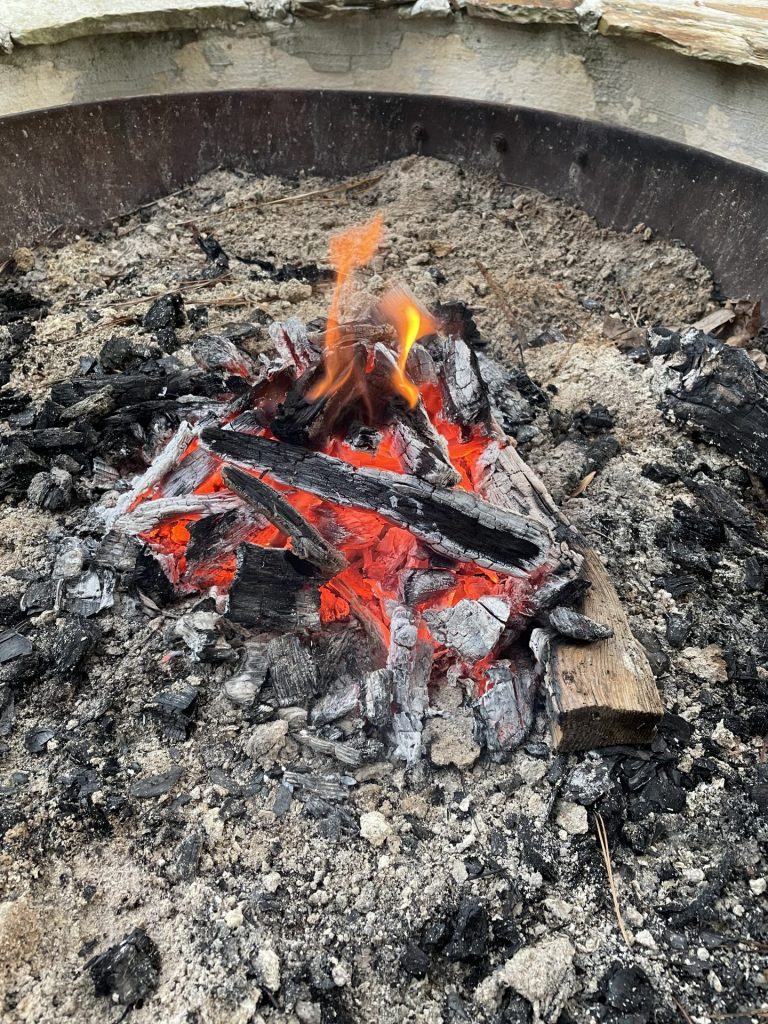
Once the fire has burned down to coals, place the container over the hottest part of the fire. Within a few seconds, the container should start spewing fairly thick white smoke from the holes you punched as well as from the seams around the edges.
If your fire is very hot, this process should only take a few minutes at most. You’re going to want to pay close attention during this period of time, though, because if the fire is very hot and enough oxygen can enter the container, you’ll burn your char cloth.
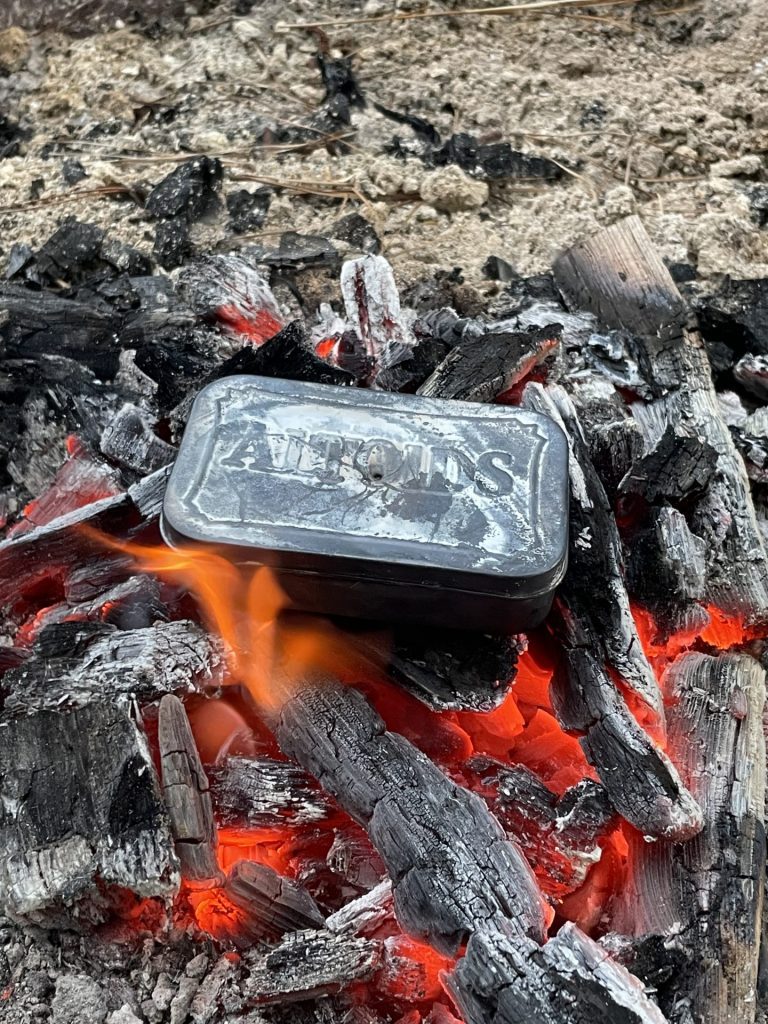
What you want to watch out for is flames. If you see yellow flames shooting out of the edges or holes of the tin container along with smoke, then too much oxygen is getting into the container and the material within is combusting instead of pyrolyzing.
If you see flames starting to come out of the container, use a stick to move it to a cooler area of the fire or off of the coals as quickly as possible to stop the combustion. Once it cools, smoke will start coming out of the container’s crevices once again.

Continue watching the container as the material within is charring. Once the smoke stops coming out of the container, you’re basically done. Leave it on for a few moments more just to make sure you’ve evenly charred everything within, then use a stick to move it fully away from the coals so it can cool.

Do not attempt to open it too soon after taking it off of the coals. Not only will the container be very hot to the touch (too hot to handle, really) but if you expose the contents to a higher concentration of oxygen before they have finished cooling you run the risk of them spontaneously combusting. If that happens, you’ll have wasted all of your effort.
Once it has cooled sufficiently, however, you should inspect your handiwork. Open the container and gently lift the charred mass of twine (or cloth) that you created.
Be very gentle, as char cloth lacks integrity and will crumble and fall apart very easily. If you did it right, what you should be left with is a mass of charred twine that has no natural coloring left but also has no white ash. If so, then you’ve charred all surfaces evenly without allowing too much oxygen in – the perfect char cloth.
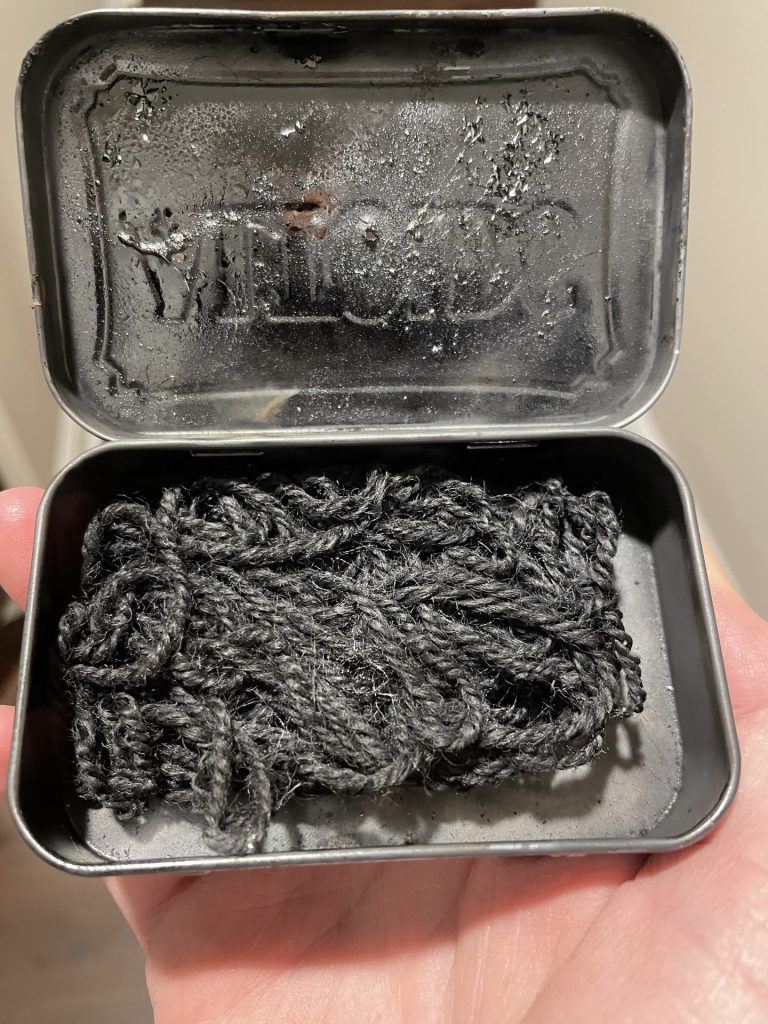
Lighting a Fire with Char Cloth
Lighting a fire with char cloth is actually relatively easy as long as you know what you’re working with.
Before you light it, though, you’re going to want to get your other tinder, kindling and fuel prepared and ready.
First prepare your fire structure, whether it’s a log cabin or a teepee – whatever you use, you need it to be ready to accept the flame that you’re about to produce. In the picture below, I’m using a nest of dried grasses that I harvested with a bit of thistledown nested into the center.
One of the most effective methods I’ve used for starting a fire with char cloth is to prepare a nest of tinder – or very fine kindling, a step up from tinder – and drop a small bit of char cloth inside of that.
To light this fire, I’m going to direct the sparks from a ferrocerium wheel onto the char cloth. (As I stated, you can use flint, but I didn’t have an actual flint striker handy when I wrote this post so I’ll be using the high-tech ferro striker wheel removed from one of my Clipper lighters.)
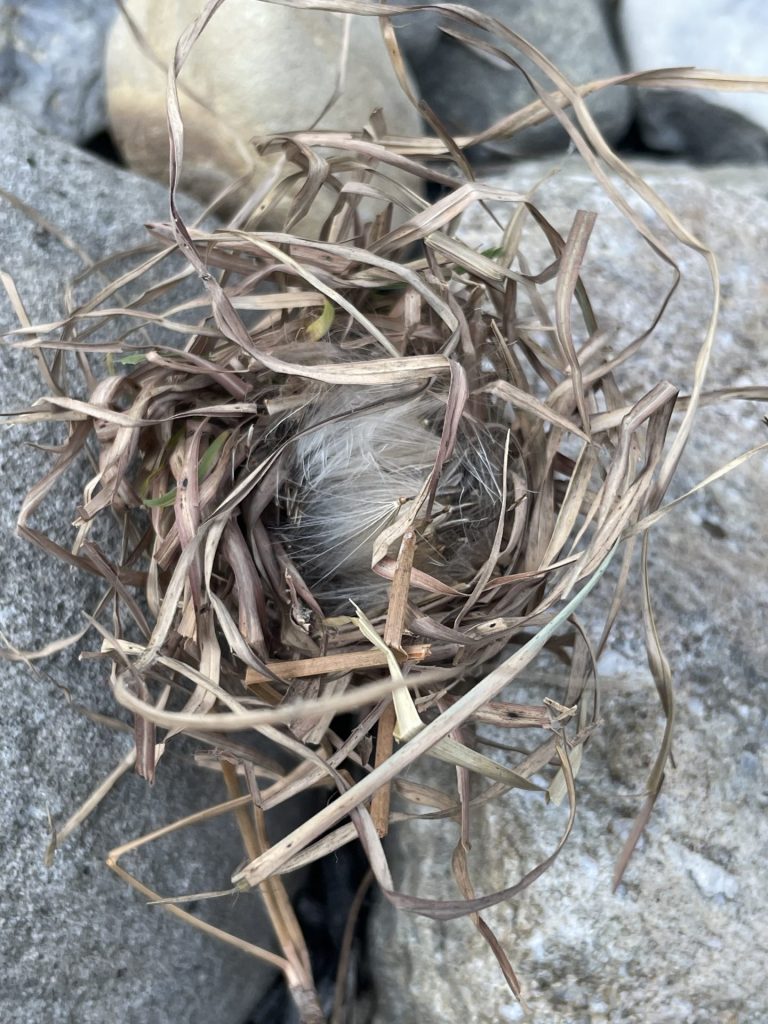
Direct sparks onto the char cloth. Wherever the sparks land on the char cloth, it will catch them and start to smolder. You’ll have a bright orange cherry. Drop the char cloth into or on top of your tinder nest and blow.

With the char cloth smoldering and in place, gently blow on it to encourage it to burn hotter. Squeeze the tinder/kindling down around it as you blow, and keep blowing as you see smoke – just like you’d do if you were instead trying to make a fire using a bow drill or another primitive method.
You’ll start to see more and more smoke, and within a few seconds at most the whole bundle should catch fire. You just made a fire using the char cloth that you created.

Satisfying, is it not?
Advantages of Char Cloth
Not only is char cloth incredibly easy to make, because it is so effective it’s a gift that keeps on giving. As long as you have access to natural, fibrous material and fire, you can continue to make char cloth so that you never run out.
But it’s also extremely useful as a fire-starting material and one of the best sources of tinder I’ve ever used.
One: Char cloth has a very, very low ignition temperature, lower than any other tinder that I’ve ever encountered. Or so it seems to me, in fact.
It will readily light with a spark and you don’t even need the hot sparks of a ferrocerium rod to ignite it. You can use the somewhat meager sparks that a piece of steel and flint will throw. If you have a flintlock action, you can ignite the char cloth with that, too.
The other great thing about char cloth is that it is completely windproof. It doesn’t burn with a flame, like most tinder. Instead, it smolders. This means it takes a little bit of coaxing to get it to ignite your fire, but it also means that wind actually makes it burn hotter instead of putting it out.
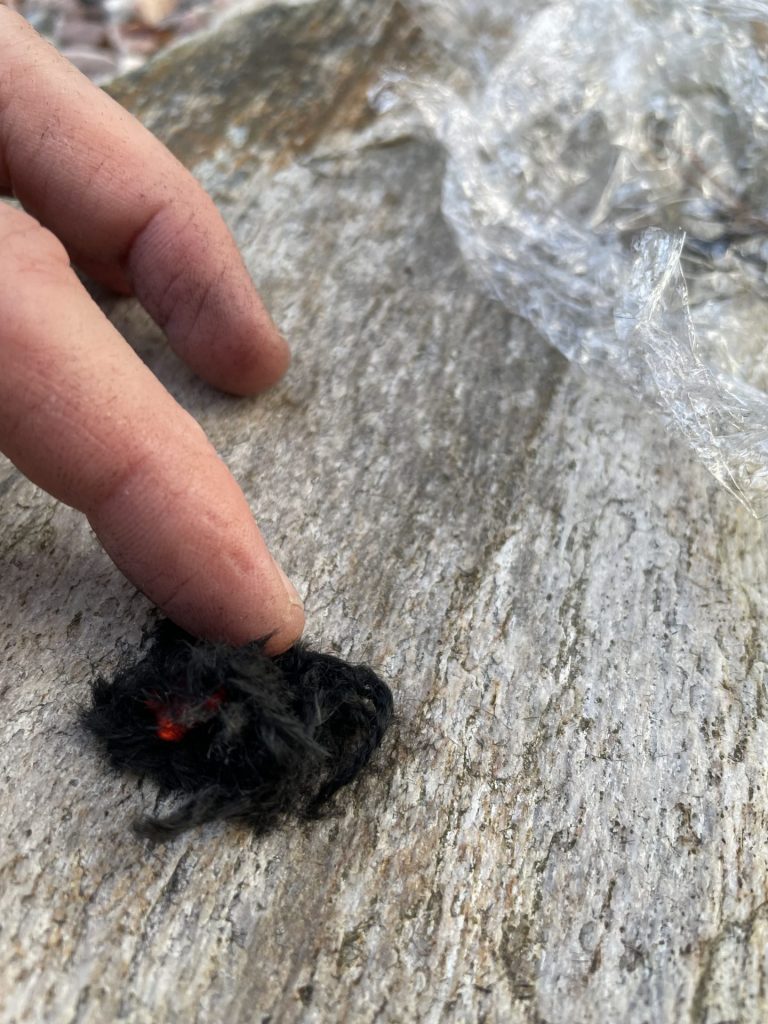
In addition, since it smolders instead of rapidly combusting, it burns for a very long time. Sheltered from wind and given a limited airflow, a tiny bit of char cloth will still burn for several minutes, giving you plenty of opportunities to use it to ignite a fire.
Another benefit is that unlike other natural tinders, like plant-based fluff, char cloth is rot-proof. Everything that could rot or decay in it has already been burned away, leaving only some carbon residue behind. In a sealed container it will basically last forever.
A little bit of char cloth goes a long way and as long as you are judicious about how much you use, you can keep most of what you produced for starting other fires down the line.
Just keep it in a sealed container and away from moisture, and it will perform exactly as needed, time after time.
Now get out there and make some of your own.
~The Eclectic Outfitter